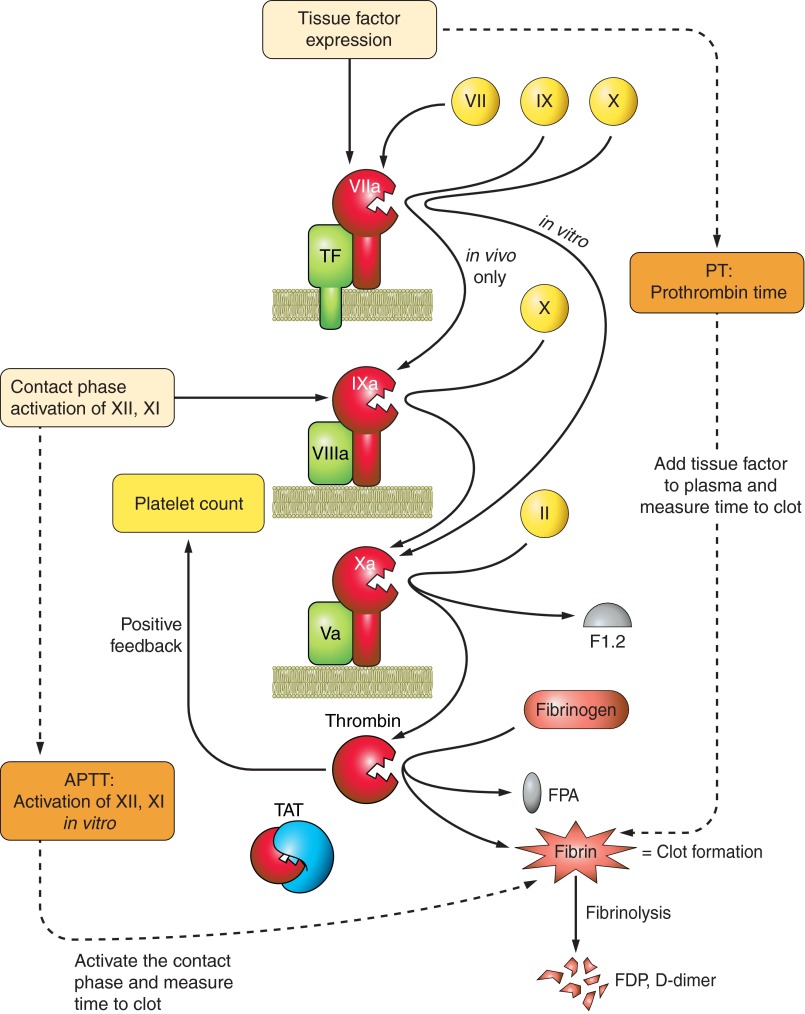Figure 3.
Common coagulation tests. The most common clinical tests of coagulation measure the time for citrated plasma to clot. The prothrombin time (PT, orange box) is the number of seconds required for a clot to form, starting from the extrinsic pathway's amplification unit of tissue factor + VIIa + phospholipid. To obtain a PT, exogenous thromboplastin is added to citrated plasma as a source of tissue factor and phospholipid, calcium is added, and the time to clot is measured. PT results are usually reported as an international normalized ratio (INR) value, which permits comparison of values from different laboratories and different thromboplastin preparations. The activated partial thromboplastin time (APTT) is the number of seconds to make a clot starting from the intrinsic contact activation pathway. It is a “partial” clotting time because tissue factor is not present. A variety of immunoassays are available that measure products of coagulation or fibrinolysis. These are less commonly used clinically but still have great value. These assays include quantification of prothrombin fragment 1.2 (F1.2) generated during limited proteolysis of prothrombin to thrombin, the inactive thrombin-antithrombin complex (TAT), fibrinopeptide A (FPA) released during formation of fibrin, and pieces of cross-linked fibrin released during fibrinolysis of the clots (fibrin degradation products, FDP; d-dimer).

